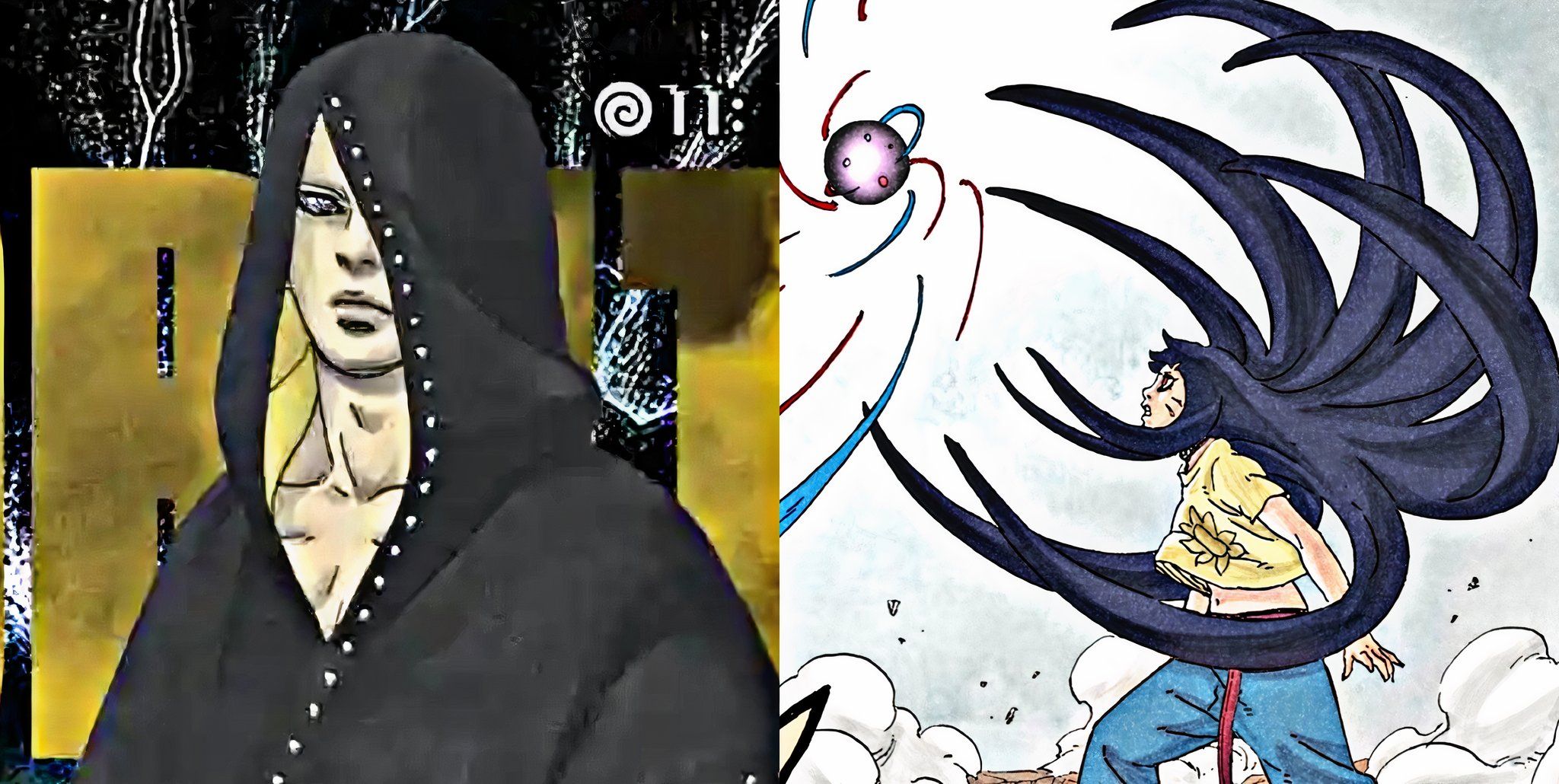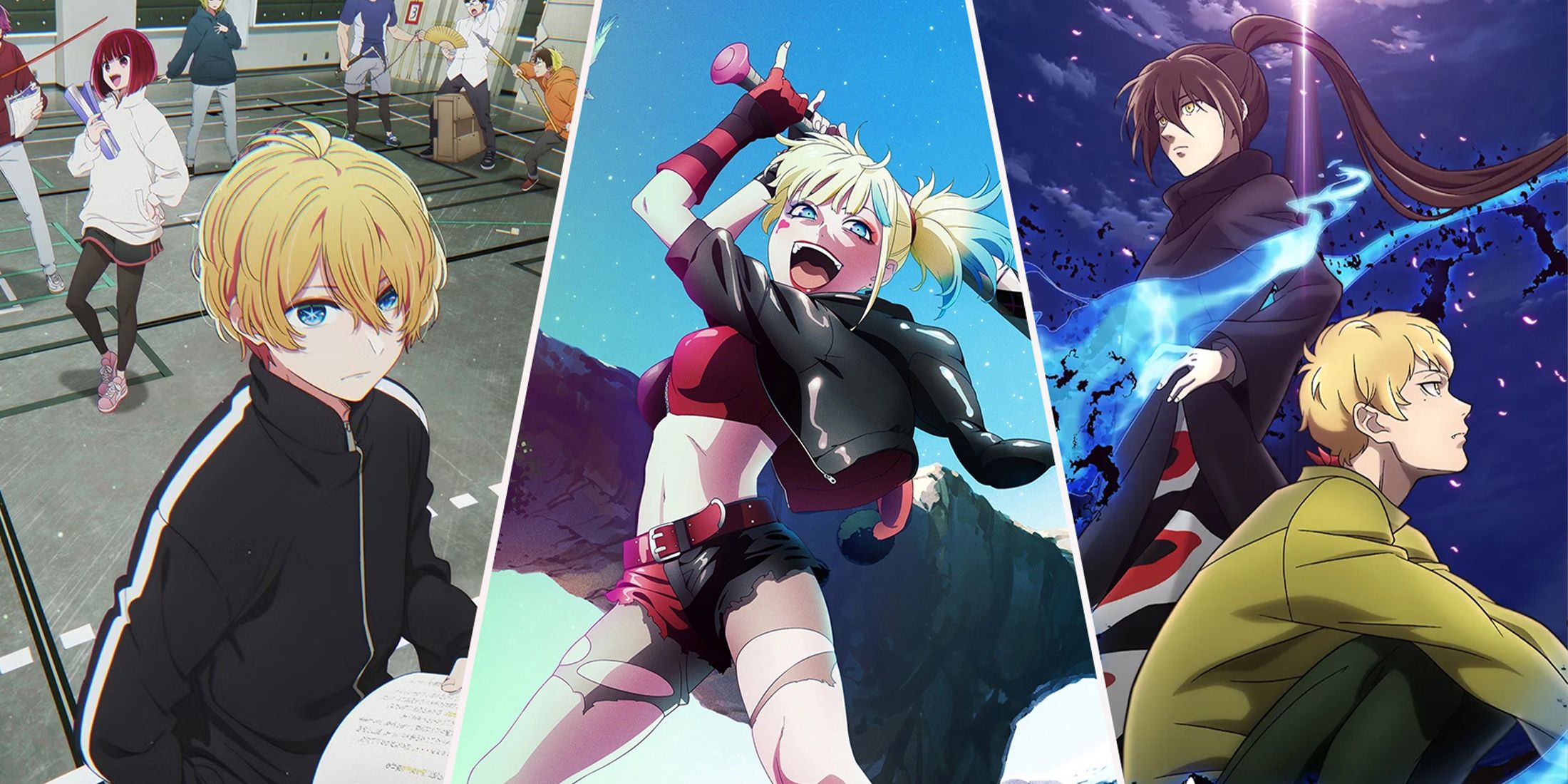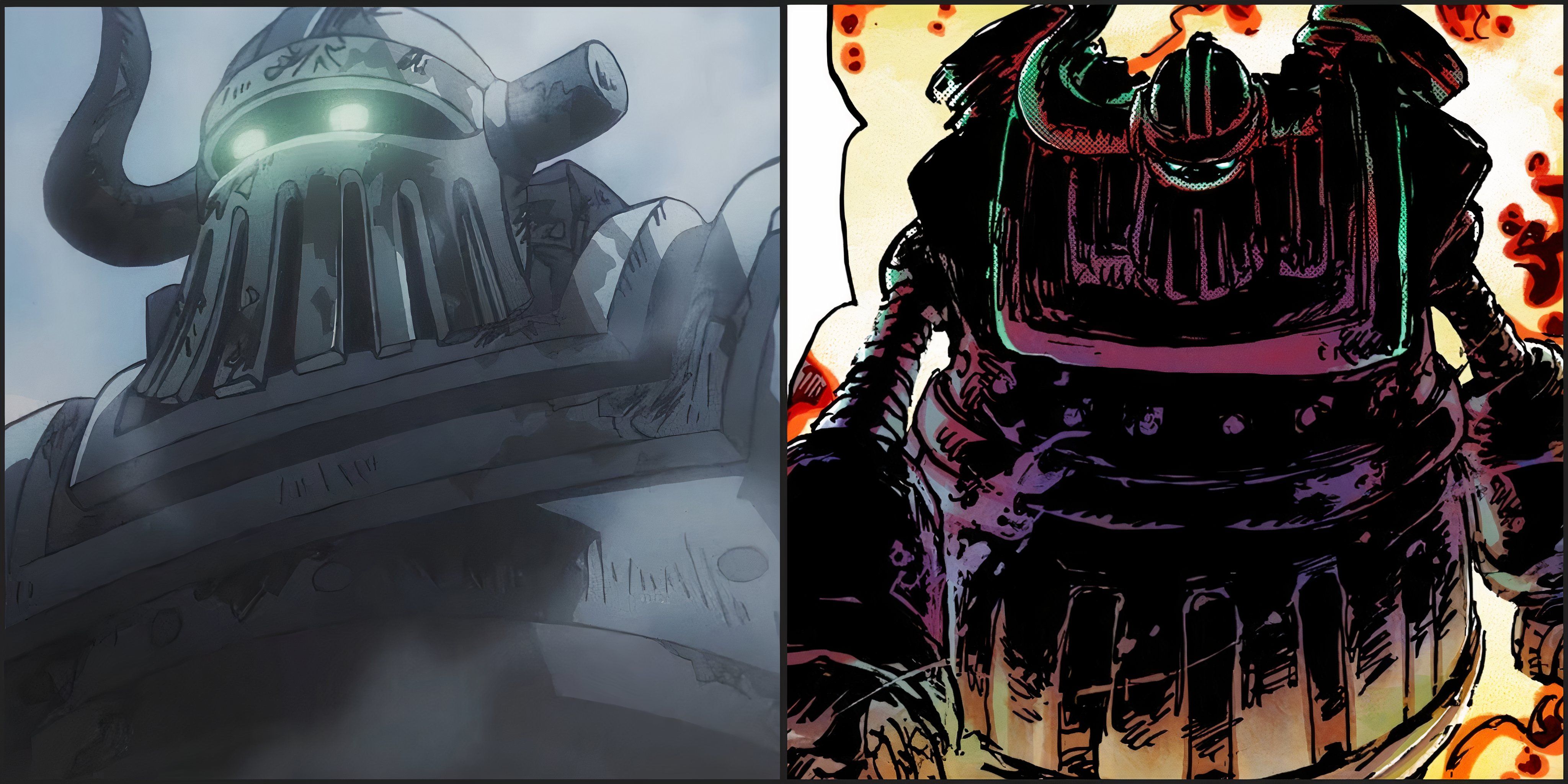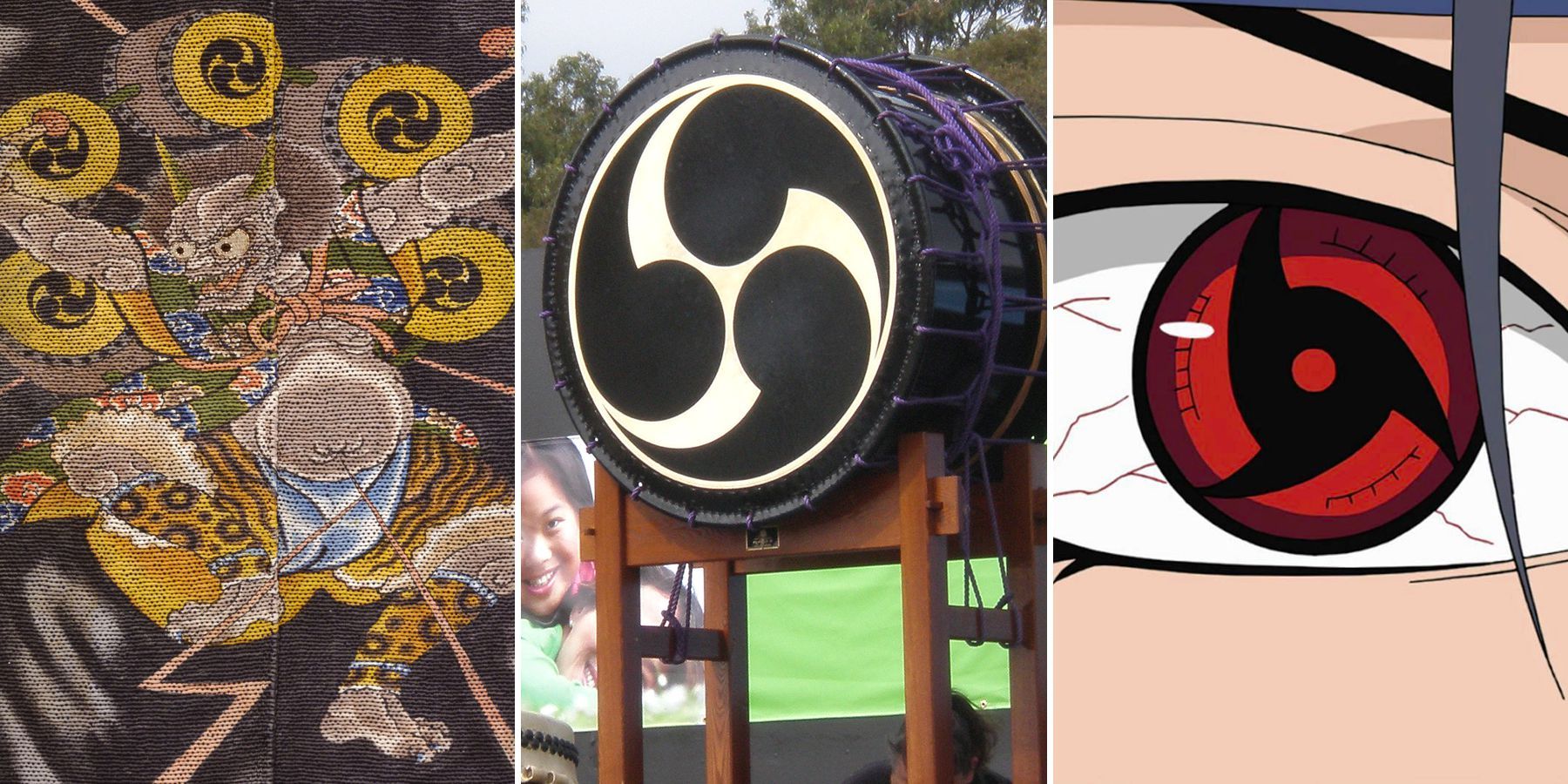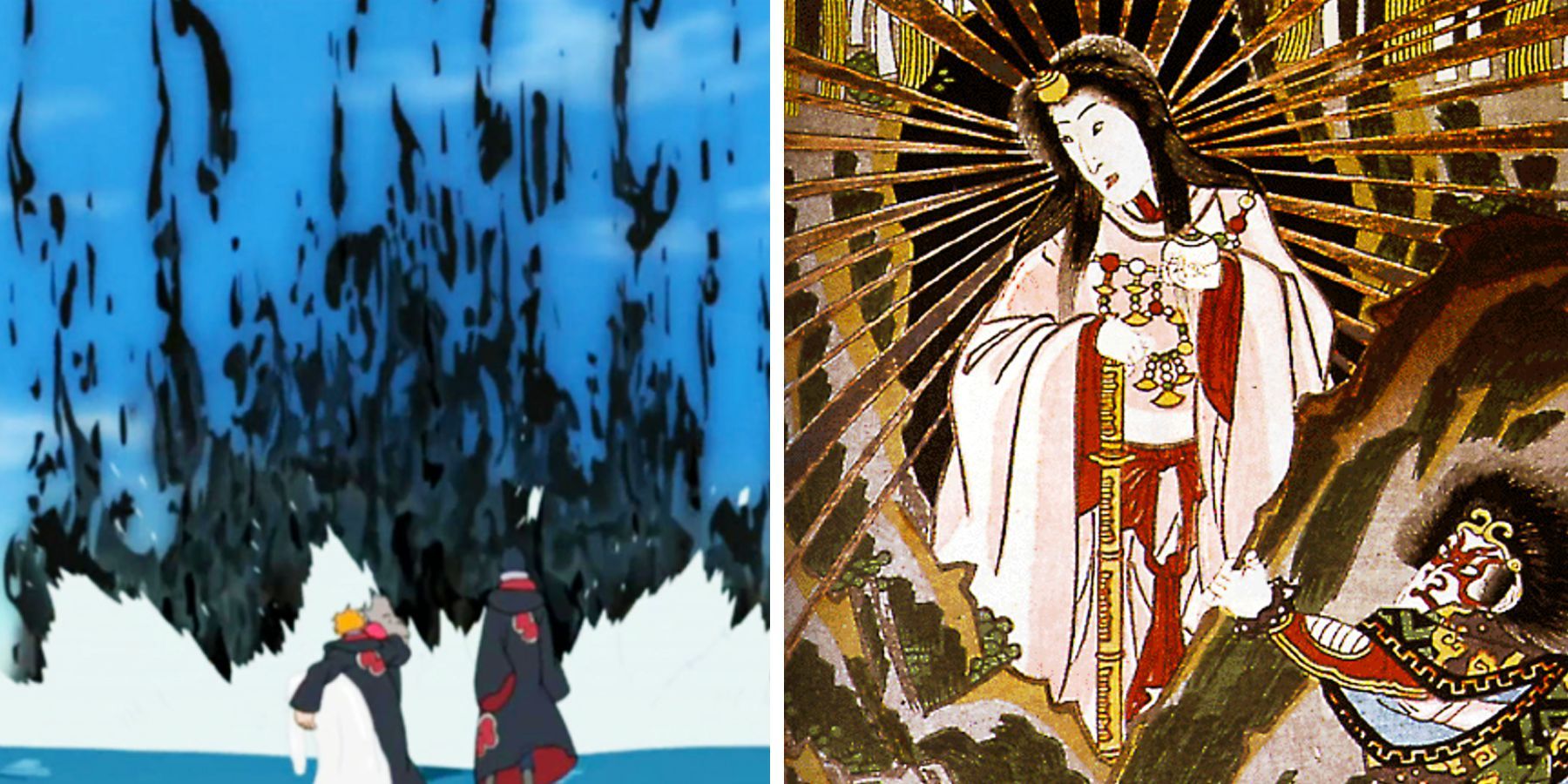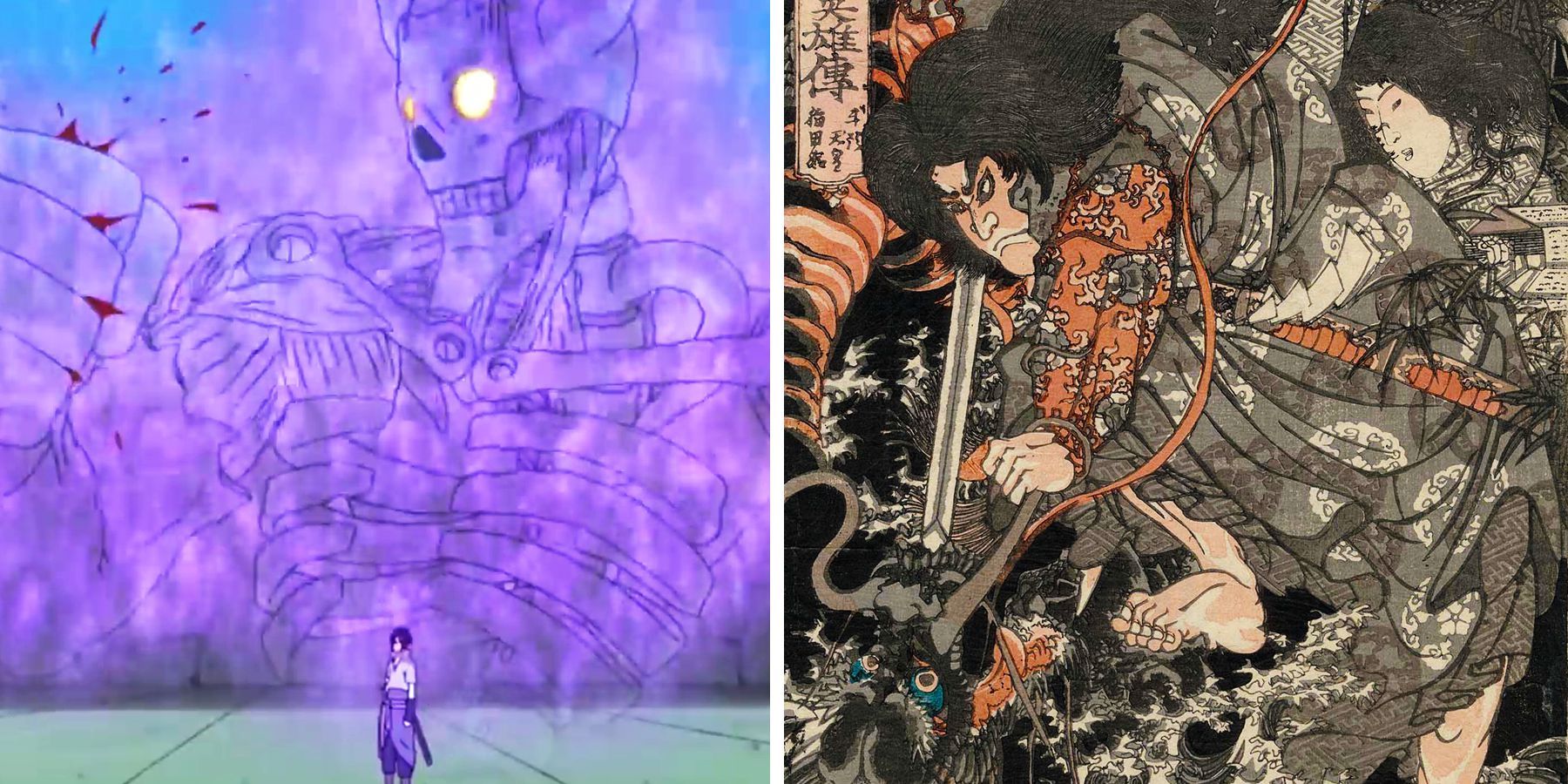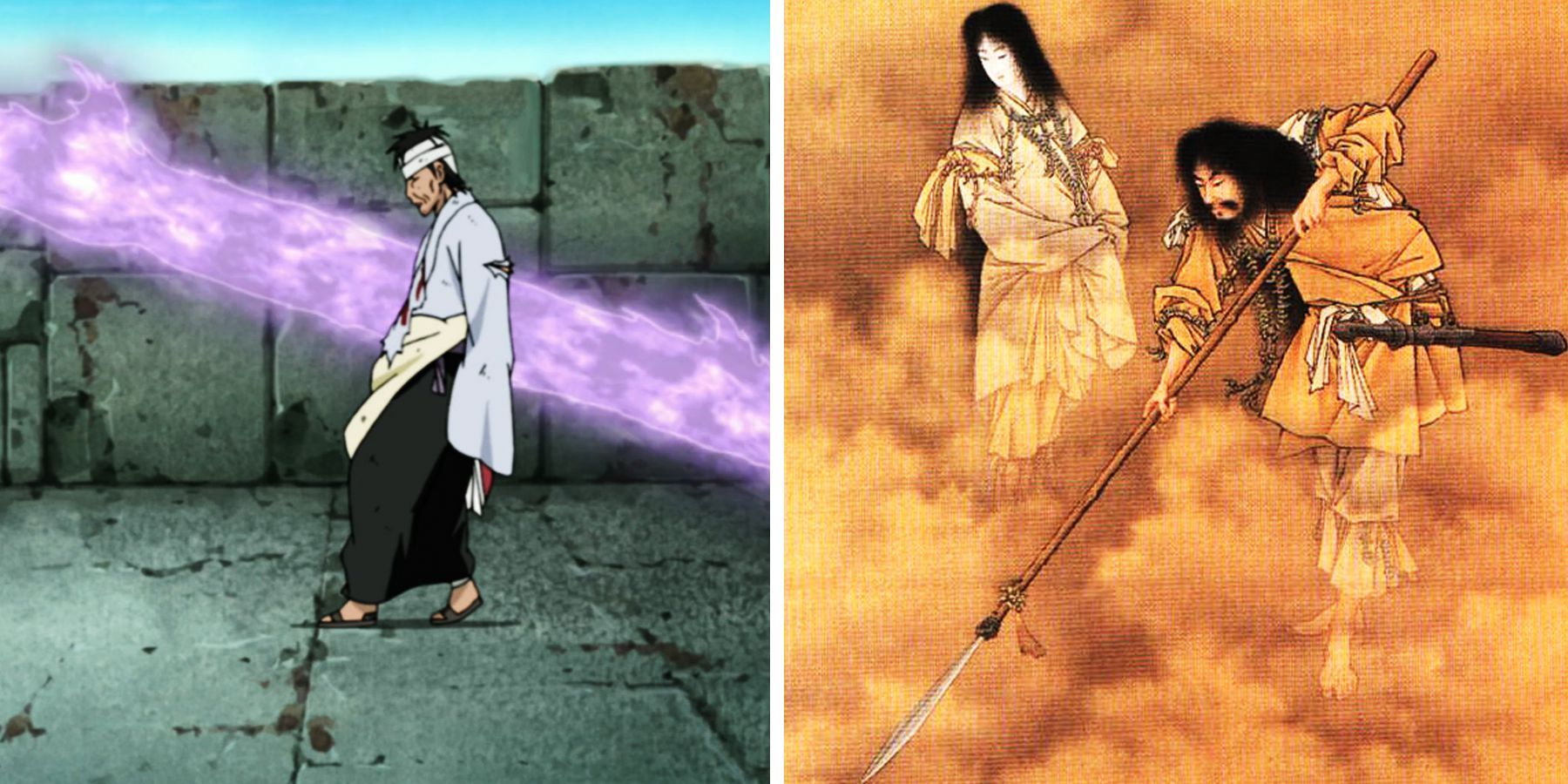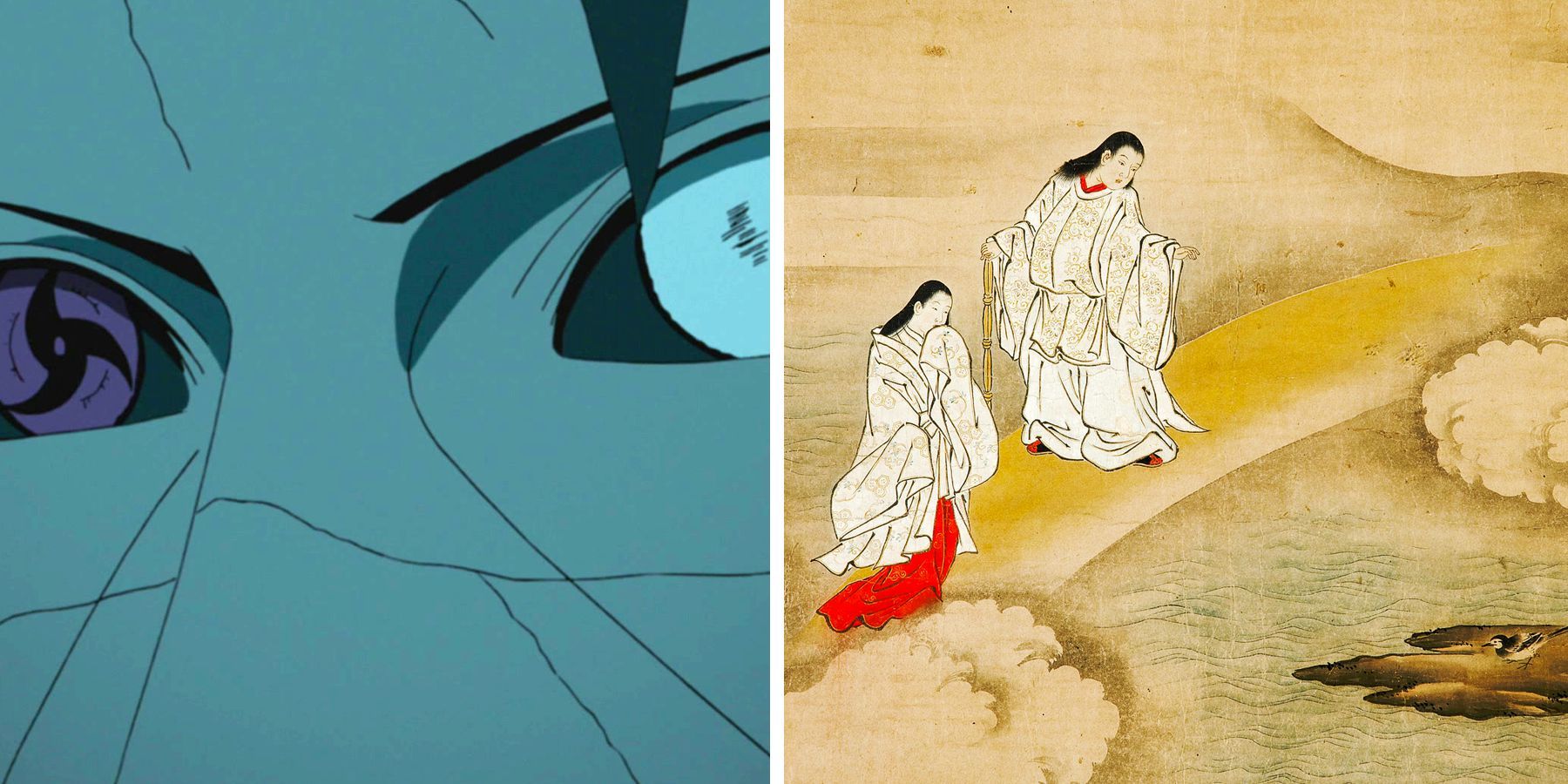As a fictional story about a real-life ancient Japanese profession, namely Ninja, Naruto naturally has tons of real Japanese mythology embedded into the story. From the obvious nine-tailed fox legends to something more subtle like the concept of chakra, you can pretty much find all kinds of Japanese folktales and mythologies all over this series.
However, there is one particular clan and characters that is cloaked in real mythologies, which is the Uchiha. One of the biggest ones is their sharingan, which is actually a rendition of a traditional Japanese symbol called “Tomoe”. A symbol that represents balance and harmony, among other things. But the use of real mythology on the Uchiha goes even further than that. So let’s take this chance to take a closer look into some of the real mythology that was used on some of the clan’s strongest jutsu.
Amaterasu
Let’s begin with one of the most iconic Uchiha’s jutsu, the Amaterasu. In the series, Amaterasu is a jutsu that can only be activated by an Uchiha who has awakened their Mangekyo Sharingan. Once invoked, the target will be engulfed by a black flame that will incinerate everything until there’s nothing left. What makes it even more terrifying is the fact that the Amaterasu flames are basically eternal. After all, the only way to extinguish it is through a Mangekyou Sharingan, either by its original user, or by other Uchiha.
In Japanese Mythology, Amaterasu, also known as Amaterasu Ōmikami, is the Goddess of The Sun, and the ruler of the heavenly place where the Gods reside, also known as Takamagahara. As one of the most important Gods in Shinto, Amaterasu is actually the eldest children of Izanagi and Izanami, with the other two being Tsukuyomi and Susanoo.
There are a lot of interesting tales regarding Amaterasu in Japanese Mythology. One of the most interesting ones is about the time when Amaterasu instructed her grandchildren Ninigi to descend from Heaven and become the ruler of the newly pacified Japan. Ninigi then becomes the ancestors of the Imperial House of Japan, which is why the Emperor of Japan is said to be the descendent of Amaterasu.
Susanoo
In Naruto, Susanoo is one of the strongest Jutsu that an Uchiha can hope to use. Similar to Amaterasu, only those who have acquired Mangekyou Sharingan can activate Susanoo. Susanoo itself is a giant humanoid being made out of chakra that can provide absolute defense and offense for its user. Since this technique connects deeply to its user’s chakra, ability, and personality, the appearance of the summoned Susanoo is different from one user to the next.
In Japanese Mythology, Susanoo, also known as Susanoo-no-Mikoto, is the God of Storms. As mentioned earlier, he is the son of Izanagi and Izanami, which means he is the youngest brother of Amaterasu. Susanoo is known within the mythology as a sort of problem child who often causes trouble to other Gods, especially to his siblings.
That being said, he is also known as one of the most powerful and virtuous Gods. One of Susanoo’s most legendary deeds is when he slayed a monstrous eight-headed serpent, known as Yamata-no-Orochi, by making it drunk and then cut off all of its heads. From its tail, Susanoo retrieves the legendary sword Kusanagi-no-Tsurugi, which he then gives to his sister, Amaterasu, which later on becomes one of the three Imperial Regalia of Japan.
Izanagi
Because of their Sharingan, the Uchihas are extremely adept at Genjutsu (Illusion technique). Izanagi brings their genjutsu to a whole nother level, because this technique enables its users to turn illusion into reality. The user can even negate his own death with this jutsu. However, the price of such powerful jutsu is also extremely steep. Because after using Izanagi, the user will become permanently blind. That is why in Naruto, Izanagi is one of the most powerful and also one of the most dangerous Jutsu that an Uchiha can use, and is considered as a forbidden jutsu.
In Japanese Mythology, Izanagi, also known as Izanagi-no-Mikoto, is the God of life and creation. He is the parent of several major Shinto Gods, such as Amaterasu, Tsukuyomi, and Susanoo, just to name a few. Izanagi, along with his sister/wife Izanami, is the last of the Seven Primordial Deities in Shinto. According to the mythology, his most notable achievement is when Izanagi, along with Izanami, creates the eight great islands of Japan.
Izanami
In Naruto, Izanami is actually quite similar to Izanagi, because both of them are the ultimate jutsu of the Uchiha clan, but they also can cause permanent blindness to its users. Unlike Izanagi, however, Izanami is a lot more difficult to pull off, and it can only be used on other people. But if a user can properly activate Izanami, they will be able to trap the opponent’s mind into an infinite time loop that is pretty much impossible to escape from. According to the legend, Izanami was created as a way to counter Izanagi.
In Japanese Mythology, Izanami, also known as Izanami-no-Mikoto, is the Goddess of death and creation. She is the younger sister and also the wife of Izanagi, which makes her the mother of the other major Gods in Shinto. Although she is also responsible for the creation of Japan’s eight great islands, her most famous story comes after she lost her life during childbirth. Because upon death, Izanami becomes the ruler of the land of the dead, also known as Yomi-no-kuni.

